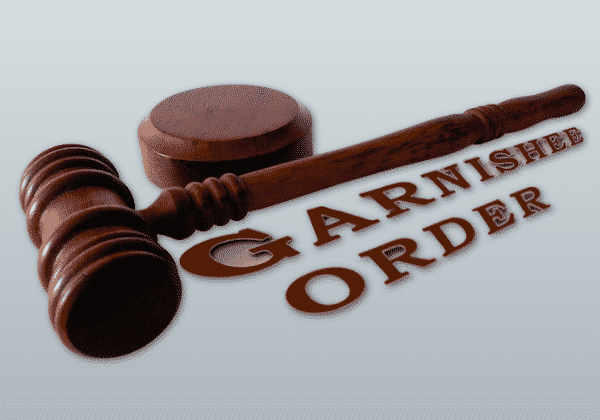
To understand Garnishee Proceedings in Nigeria, you need to bear in mind that there must be a judgment of a “Court of competent jurisdiction” which enables a successful judgment creditor to enforce the Court’s judgment.
The law provide for other ways of enforcing judgment but Garnishee proceedings is unique, and about the only procedure in law through which an “innocent” third party ( the garnishee) is made a party in a judicial proceeding regardless of the fact that he is not a party in the suit wherein judgment was pronounced.
What is a Garnishee Proceeding?
As defined by the Free Legal Dictionary:
Garnishee proceedings is simply a judicial process of execution or enforcement of monetary judgment by the seizure or attachment of the debts due or accruing to the judgment debtor which form part of his property available in execution.
By this process, the court has power to order a third party to pay direct on the judgment creditor the debt due or accruing due from him to the judgment debtor, as much of it as may be sufficient to satisfy the amount of the judgment and the cost of the garnishee proceedings
Garnishee proceeding is can also be defined as a judicial process of execution or enforcement of monetary judgment whereby money belonging to a judgment debtor, in the hands or possession of a third party known as the ‘Garnishee’ (usually a bank), is attached or seized by a judgment creditor, in satisfaction of a judgment sum or debt.
One of the ways of enforcing judgment is the garnishee proceedings which prescribed in Sections 83 to 92 of the Sheriffs and Civil Process Act. See Azubuike v. Diamond Bank (2014) 3 NWLR (Pt.1394) 116 @ 127 Para. C – E, Ratio 2
By its nature, Garnishee proceeding is “sui generis”, and different from other Court proceedings, although it flows from the judgment that pronounced the debt.
Parties Involved in Garnishee Proceeding in Nigeria
1. The Garnishor or Judgment Creditor
A garnishor is a Creditor who initiates garnishment for the purpose of reaching property or credits of a debtor held or owned by a third person who is the garnishee usually banks.
2. The Judgment Debtor
A judgment debtor is a person or entity against whom a judgment ordering him to pay a sum of money has been obtained and remains unsatisfied.
3. The Garnishee
A person or entity that is garnisheed; a garnishee is a third party (banks, employer, employer etc.) who, while not involved in a court case between a debtor and creditor or a defendant and a plaintiff (the garnisher), is required by a court order (garnishee order) to seize, in part or in full, the money (account balance, payment, wages) belonging to the debtor or defendant, and transfer it to the creditor or plaintiff until a debt or claim is satisfied.
Orders Made in Garnishee Proceeding in Nigeria
Garnishee proceedings are done in two different stages with two court orders made. The first stage is for the garnishee order nisi, whilst the second stage is for the garnishee order absolute.
1. Garnishee Order Nisi
Garnishee order nisi directs the Garnishee to appear in court on a specified date to show cause why an order should not be made upon him for the payment to the judgment creditor of the amount of debt owed by the judgment debtor. The extant laws regulating Garnishee proceedings are the Rules of Courts, case laws and also the Sheriff and Civil Process Act (SCPA).
2. Garnishee Order Absolute
The name given to a final and conclusive court order after the condition of an interim or intervening order (decree nisi) is met. In a garnishee proceeding, the order absolute is made at the second stage on the return date hitherto given at the first stage if the Garnishee fails to attend Court, or does not dispute the debt due or claimed to be due from him to the judgment debtor.
The Court may subject to certain limitations, make an order absolute under which the garnishee will be ordered to pay to the judgment creditor, the amount of debt due from him to the judgment debtor, or so much of it as is sufficient to satisfy the judgment debt together with the cost of the garnishee.
In Conclusion
Garnishee proceeding is otherwise another means by which judgment is enforced. Garnishee proceeding denotes that the judgment debtor is himself a creditor to another; and that the judgment creditor has to obtain an order of court that the debtor pays the judgment creditor by the instrumentality of attaching the debt.
Where the judgment creditor has garnisheed the debt standing to the credit of the judgment debtor in the hands of the garnishee, upon the service of the order nisi from the court, the garnishee becomes a custodian of the whole of the judgment debtor’s fund attached.
Written By:
Frank Ihedoro
Frank is an Associate and a Litigation lawyer with keen interest in Human Rights Advocacy and Public interest Litigation. His advocacy practice includes judicial reforms and review, insolvency disputes and real estate litigation

